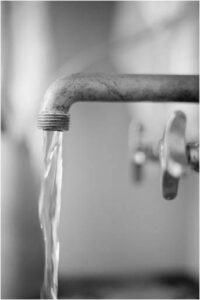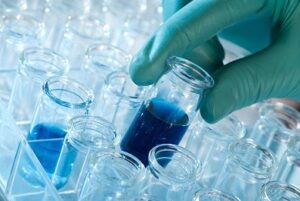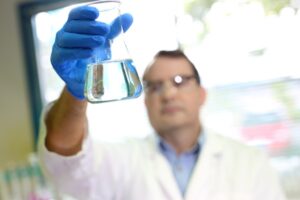Water Testing Standards
water testing standards are instrumental in specifying and evaluating the methods and facilities used in examining the various characteristics of and contaminants in water for health, security, and environmental purposes. These water testing standards allow concerned local government authorities, water distribution facilities, and environmental laboratories to test the quality of water and ensure safe consumption.
Calcium and magnesium salts in water are the primary components of water hardness which can cause pipe or tube scaling.
Scope
These test methods cover the determination of calcium and magnesium in water by complexometric titration and atomic absorption spectrometric procedures
The values stated in SI units are to be regarded as standard. The values given in parentheses are mathematical conversion to inch-pound units that are provided for information only and are not considered standard.
This standard does not purport to address all of the safety concerns, if any, associated with its use. It is the responsibility of the user of this standard to establish appropriate safety and health practices and determine the applicability of regulatory limitations prior to use.
Significance and Use
Chloride ion is under regulation in waste water, and must, therefore, be measured accurately. It is highly detrimental to high-pressure boiler systems and to stainless steel, so monitoring is essential for prevention of damage. Chloride analysis is widely used as a tool for estimating the cycles of concentration, such as in cooling tower applications. Processing waters and pickling solutions used in the food processing industries also require dependable methods of analysis for chloride.
Scope
These test methods cover the determination of chloride ion in water, wastewater (Test Method C only), and brines
Test Methods A, B, and C were validated under Practice D2777 – 77, and only Test Method B conforms also to Practice D2777 – 86. Refer to Sections 14, 21, and 29 for further information.
The values stated in SI units are to be regarded as standard. No other units of measurement are included in this standard.
This standard does not purport to address all of the safety concerns, if any, associated with its use. It is the responsibility of the user of this standard to establish appropriate safety and health practices and determine the applicability of regulatory limitations prior to use.

Water Testing for Homeowners/Private Well Owners
How do I know which test(s) to perform?
A wide range of water analyses are available to private well owners. Select one or more packages (see below). If you would like assistance
Homeowner Package
Basic package. Choose this package if you are unsure of which tests to perform
Includes the two most important tests to perform regularly on a well (bacteria and nitrate)
Metals Package
Consider testing for metals if:
You have never had your well tested for arsenic
You are experiencing problems with staining
Previous tests indicated the presence of arsenic
Your plumbing system has components that contain copper or lead
Pesticides
Consider testing for pesticides if:
Your well is within 1/4 mile of agricultural fields where corn has been grown
Previous tests indicated elevated levels of nitrate likely caused by agricultural fertilizers
Pharmaceuticals and Personal Care Products (PPCPs)
A screening tool to investigate the presence of human waste that may be impacting a well or surface water body.
Tests for 13 compounds including artificial sweeteners, antibiotics, and other personal care products.

WATER TESTING
Water Bacteriology Testing for Total Coliform/E.coli
Testing for total coliform and E. coli organisms in drinking water is required by the EPA for all public water systems on an ongoing basis and annual testing is recommended for private individuals with their own water well systems. Water suitable for human consumption must be free of these organisms to be considered safe to drink.
accredited laboratory certified to test drinking water for total coliform and E. coli bacteria. The NTRL offers total coliform/E. coli testing to public water systems for ongoing regulatory compliance and to private individuals to assess the quality of their drinking water.

Testing your water
Step 1: Choose your water test package
We offer a broad range of testing packages if you are concerned about the quality of your water in:
swimming pools
rain water tanks
dam water
Fresh Care and more
Step 2: How to prepare and submit samples
It’s very important to prepare and collect samples correctly. In order to ensure the scientific tests are valid, our laboratory is not able to accept samples that are not collected in the correct samples containers that we provide.
It’s very important to collect your samples correctly using the sampling kits we provide.
In order to ensure the scientific tests are valid, our laboratory does not accept samples that have been collected in the wrong containers. We will provide you with a sample kit containing sample bottles and sampling instructions once you have selected and paid for the testing you require.
POST SAMPLE BOTTLES:
Have the sampling kit posted to you for $10.06. Make sure that you request postage at the bottom of page one on your application form.
Follow the sampling procedures
Follow the sampling instructions provided.
Collect the sample on the correct day – detailed on the Water Testing application form.
Samples must be delivered to the lab within 12 hours of collection on the days that are acceptable for sample delivery – detailed on the Water Testing application form.
Collect the sample in the sample bottles provided.
Label the sample bottles with: your name, your address, the date the sample is collected and the time the sample is collected.
Place the sample bottles and a copy of your Water Testing application form or Chain of Custody form in the zip lock plastic bag. Make sure the following information has been supplied on your Chain of Custody form: Customer details (phone number, email address), sample description (to identify each sample) and the laboratory tests required on each sample.
Keep the samples chilled during transportation to the drop off location (ideally between 2-6°C). You may use a portable refrigerator or an esky with ice-bricks or an esky with crushed ice. Do not freeze the samples.
Private Drinking Water Testing
The quality of drinking water from a private source may change over time, even suddenly. Changes can go unnoticed since the water might look, smell, and taste the same. Testing your private well water on a regular basis is an important part of maintaining a safe and reliable source of drinking water. Testing is also important to help identify and address any problems in your drinking water supply.
Regular testing is important to:
Identify existing problems
Ensure water is suitable for the intended use, especially if used for drinking by humans and animals
Track changes over time
Determine the effectiveness of a treatment system
Sampling, inspecting, and testing of your well can be conducted through our program or we can refer you to a certified laboratory in your area. Some communities offer free screenings, through extension services, called “Test Your Well” events.